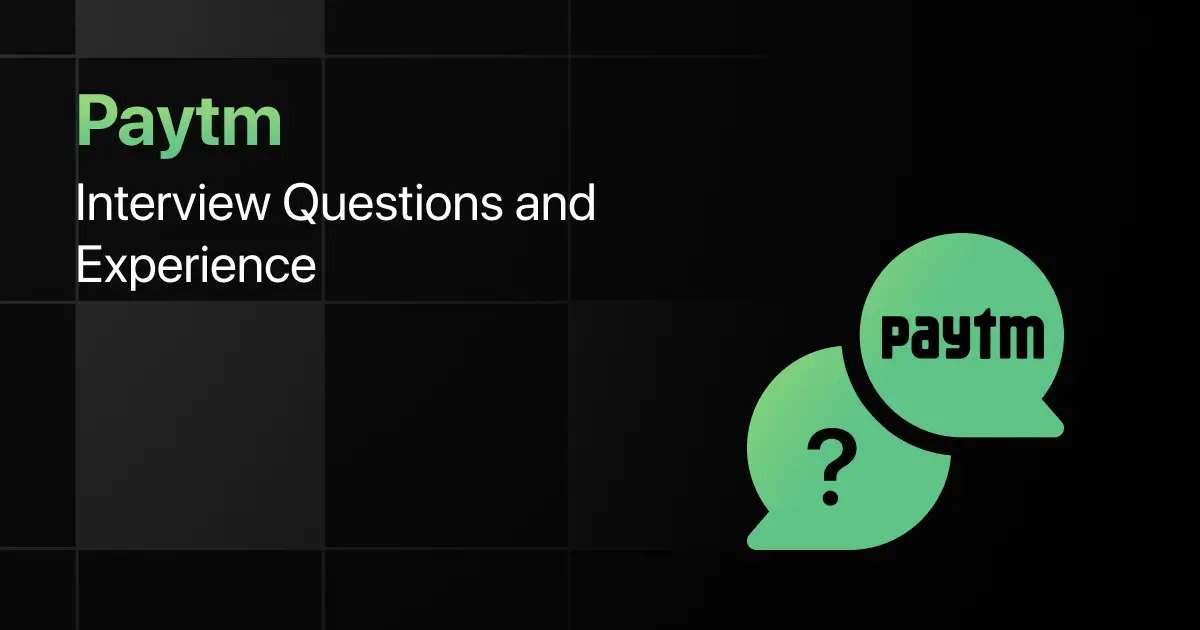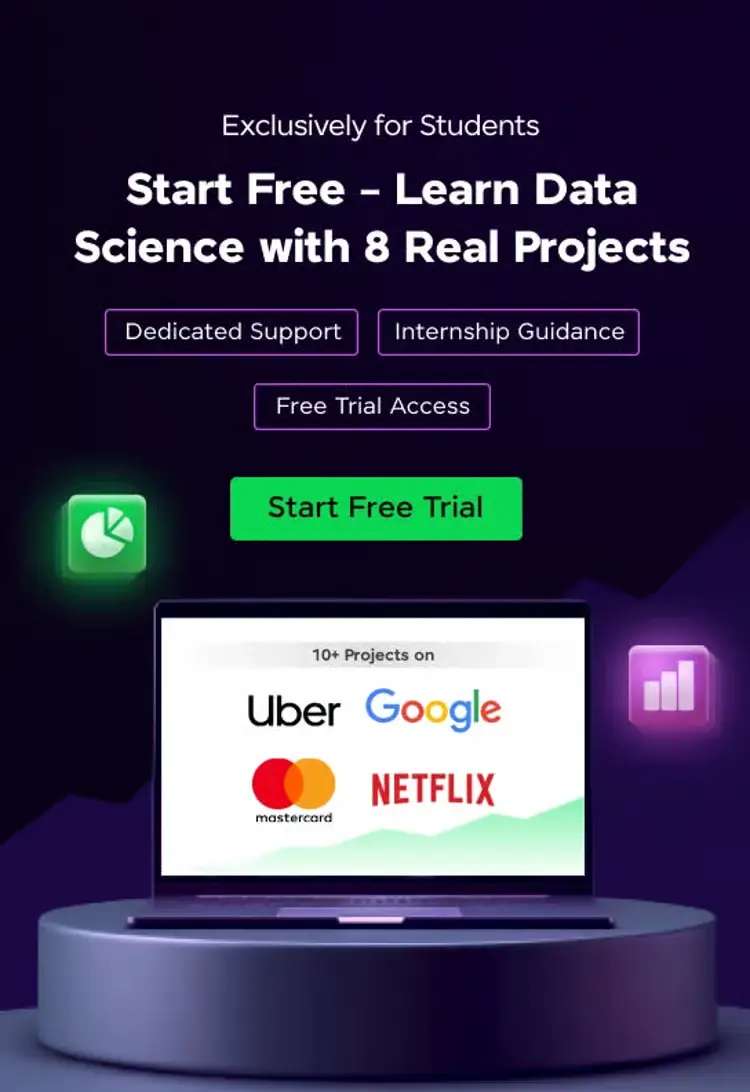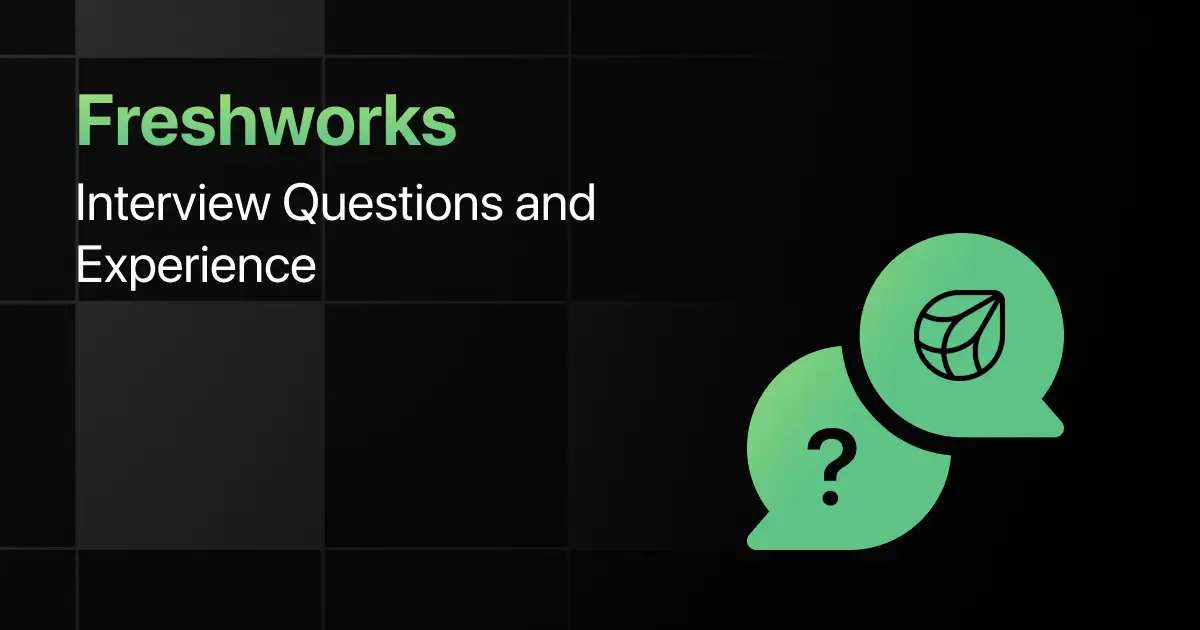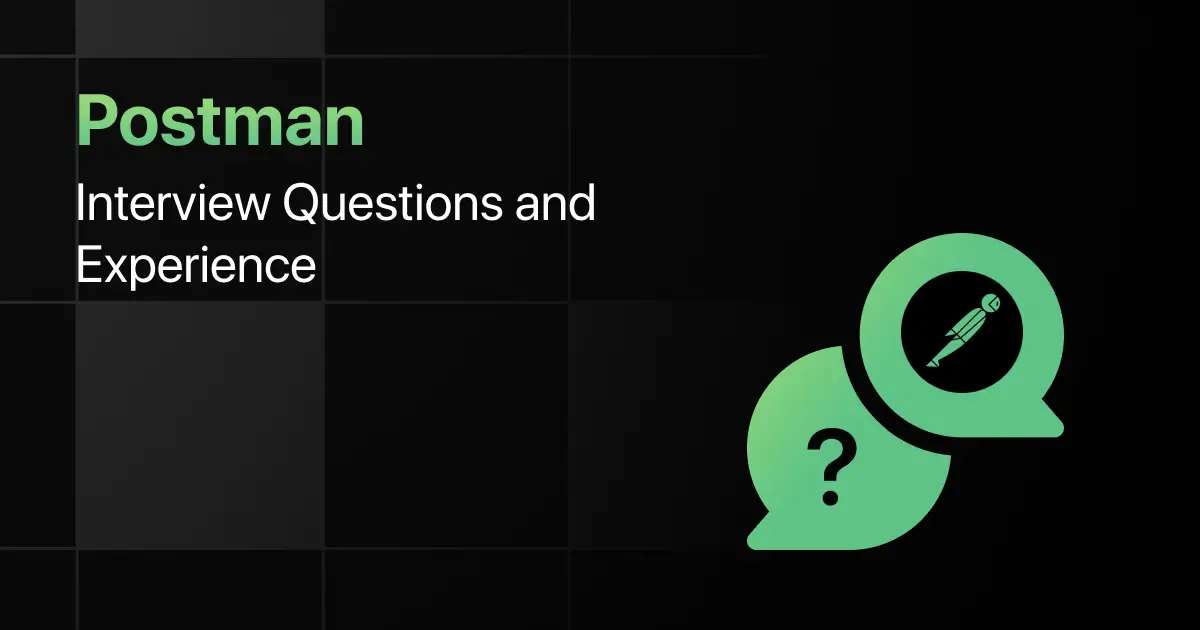Zomato Interview Questions and Experience

Have you ever wondered what it takes to clear an interview at Zomato, one of India’s leading food delivery and restaurant tech platforms?
Zomato is known for its fast-paced culture, focus on customer experience, and data-driven decision-making. The interview process is designed to test technical expertise, problem-solving ability, and adaptability.
In this blog, we’ll explore Zomato’s hiring process, commonly asked interview questions, real candidate experiences, and preparation tips to help you succeed.
Zomato Hiring Process – Overview
Here’s a quick overview of Zomato’s hiring process:
| Category | Details |
|---|---|
| Eligibility | Open to both freshers and experienced candidates. Preferred degrees include Computer Science, IT, Engineering, Data Analytics, and related fields. |
| Rounds | Typically 4–5 rounds: Online Assessment, Technical Interviews (2–3 rounds covering DSA, problem-solving, and system design), followed by HR/Behavioral round. |
| Job Roles Offered | Software Development Engineer (SDE), Data Analyst, Product Manager, Operations Associate, Data Scientist. |
| Salary Range | Freshers: ₹6 – ₹12 LPA (AmbitionBox, Glassdoor). Experienced: ₹18 – ₹35 LPA depending on role and expertise (AmbitionBox, Glassdoor). |
| Apply Link | Apply Now |
Top Zomato Interview Questions with Answers
Zomato’s interview process tests a mix of technical depth, problem-solving skills, and role-specific expertise. Candidates should be ready for data-driven questions, system design challenges, and behavioral scenarios that reflect Zomato’s fast-paced environment.
Below are the interview questions with sample answers to help you prepare.
1. Technical Questions
- What is the difference between normalization and denormalization in databases?
Normalization reduces redundancy by splitting data into multiple tables, while denormalization combines them to improve query speed at the cost of redundancy. - How would you design a food delivery system like Zomato?
I’d break it into services for user management, order placement, restaurant onboarding, delivery tracking, and payments. Use microservices, caching, and load balancing for scale. - What is a deadlock in operating systems and how do you prevent it?
Deadlock occurs when processes wait indefinitely for resources. It can be prevented using resource ordering, deadlock detection algorithms, or avoiding circular wait conditions. - Explain the difference between clustering and classification in machine learning.
Clustering is unsupervised grouping of data (e.g., grouping similar food habits), while classification is supervised prediction of labels (e.g., predicting user churn). - What are ACID properties and why are they important in transactions?
They ensure reliability: Atomicity, Consistency, Isolation, and Durability — critical for Zomato’s payment systems. - How does caching improve performance in high-traffic applications?
Caching reduces response time by storing frequently accessed data, ensuring quick access during peak hours like dinner time. - What is the difference between REST and GraphQL APIs?
REST uses fixed endpoints returning complete data, while GraphQL allows clients to query exactly what they need, reducing over-fetching. - How would you calculate the nearest delivery partner for a customer order?
By using geospatial indexing, calculating distances with Haversine formula, and considering driver availability and traffic conditions. - What is sharding in databases?
Sharding splits large databases into smaller partitions for scalability. In Zomato, restaurants could be sharded by location to balance load. - Explain the producer-consumer problem and how to solve it.
It’s about synchronizing producers adding to a buffer and consumers removing from it. Solved with semaphores, locks, or concurrent queues. - What’s the difference between TCP and UDP, and where would Zomato use each?
TCP ensures reliable delivery (used in payments), while UDP is faster (used in live delivery tracking). - What is eventual consistency in distributed systems?
It means updates may not be immediately visible across all nodes but will eventually become consistent. Useful in order tracking systems. - How would you optimize queries for a large product catalog?
Use indexing, caching, query rewriting, and database partitioning to reduce response times. - What’s the difference between synchronous and asynchronous processing?
Synchronous waits for tasks to complete before moving on, while asynchronous continues execution, improving efficiency in background tasks like sending notifications. - How do load balancers ensure high availability?
They distribute traffic across servers, prevent overload, and ensure failover in case of server downtime.
2. Role-Based Questions
For Freshers (Software Engineer / SDE 1)
- Why do you want to join Zomato as a fresher?
Because Zomato solves complex real-world problems at scale, offering a great opportunity to learn distributed systems, product design, and customer-focused innovation. - What challenges do you expect in your first role here?
Adapting to large-scale production systems, quickly learning Zomato’s tech stack, and collaborating effectively in cross-functional teams. - Explain OOP principles with examples.
Encapsulation (hiding data), Abstraction (simplifying complexity), Inheritance (reusing code), Polymorphism (same interface, different behavior). Example: A FoodDelivery class inherited by ZomatoDelivery. - What technologies do you think Zomato uses for its app?
Likely a mix of Java, Kotlin, React Native, microservices in Java/Python, distributed databases, and cloud-native solutions for scale.
For Data Analyst
- What metrics would you track to measure restaurant performance on Zomato?
Number of orders, ratings, delivery time, cancellation rate, and repeat customers. - Write SQL to find the top 5 most-ordered food items.
Use GROUP BY on item_id, count orders, and sort in descending order with LIMIT 5. - How would you visualize customer order trends for a dashboard?
With time-series charts for orders per day, heatmaps for order times, and bar charts for top cuisines. - How would you handle missing values in customer transaction data?
By imputing with mean/median, forward-fill methods, or removing rows if the proportion is low.
For Data Scientist / ML Engineer
- How would you build a model to predict delivery time?
Use regression with features like distance, traffic, time of day, weather, and driver history. - What steps would you take to detect fraudulent transactions?
Build anomaly detection systems using ML classification and real-time monitoring of unusual spending patterns. - How do recommendation systems improve customer engagement?
By suggesting personalized restaurants or dishes using collaborative filtering, content-based methods, and deep learning. - What evaluation metrics would you use for churn prediction?
Precision, recall, F1-score, and ROC-AUC to balance false positives and negatives.
For Managerial / Product Roles
- How do you prioritize product features in a food delivery app?
By balancing user impact, business value, and engineering effort, often using frameworks like RICE. - How would you manage downtime during peak dinner hours?
By activating incident response, shifting load to backup servers, and communicating with customers in-app. - What leadership style do you think works best at Zomato?
A mix of collaborative and results-driven leadership that balances innovation with delivery under deadlines. - Why is cultural fit important at Zomato?
Because Zomato values ownership, customer obsession, and adaptability, which are essential in a competitive and fast-paced industry.
3. Behavioral Questions
- Tell me about a time you had to work under pressure.
During college, I managed a project with a tight deadline by organizing tasks, delegating effectively, and delivering results on time. - How do you handle conflicts with teammates?
By understanding their perspective, presenting my view with data, and finding a collaborative middle ground. - Describe a situation where you had to adapt quickly.
During an internship, sudden requirement changes forced me to learn a new tool within days and successfully complete the project. - How do you manage priorities when deadlines clash?
By identifying high-impact tasks first, negotiating timelines if possible, and updating stakeholders proactively. - Give an example of when you showed ownership.
I took initiative to fix bugs in a project outside my assigned scope, ensuring smooth delivery and customer satisfaction. - Why do you want to work at Zomato?
Because Zomato offers the chance to solve real-world large-scale challenges, work in a customer-first culture, and grow in a dynamic environment. - What motivates you to work in the food-tech industry?
The opportunity to blend technology with everyday human needs like food, creating impact at scale. - How do you ensure clear communication with cross-functional teams?
By providing structured updates, clarifying expectations, and confirming alignment through regular meetings and documentation.
Zomato Interview Experiences
1. SDE (Backend) role Interview Experience (Fresher)
Here’s the experience of Utkarsh Agarwal, who interviewed for the SDE (Backend) role at Zomato.
Candidate Background:
Utkarsh was a final-year B.E. CSE student at Ramaiah Institute of Technology, Bangalore. He had strong backend exposure through internships at ShareChat, Samsung R&D, and Groww, along with national-level hackathon wins.
Interview Process They Faced
- The process had 3 rounds:
- Technical Round 1 – Project deep dive, DSA, SQL queries, database concepts.
- Technical Round 2 – DSA, real-world problem-solving, tools like Docker/Kubernetes, and SQL queries.
- Final Round with CTO – HR-style discussion on location, compensation, and motivation to join Zomato.
Questions Asked
- Resume-based: explain KisanSeva project and ShareChat optimizations.
- Real-world DSA: delivery boy maximizing orders within fixed time (approach: DP / activity selection).
- Check if a linked list is palindrome.
- Database schema design and SQL queries (unique phone constraint, indexing).
- Shuffle playlist function with equal probability.
- Grid problem with guards and walls (solved via BFS).
- SQL query: find second-highest salary, sparse vs dense index.
- HR: “What excites you about Zomato?” and “What are your expectations?”
Outcome & Difficulty Level:
Utkarsh cleared all rounds and was selected. He described the DSA and SQL-heavy rounds as challenging but fair.
His advice: focus on individual project contributions, SQL fundamentals, and clear problem-solving communication.
2. Software Developer Role Interview Experience (Experienced)
Here’s the experience of Shivam Bhadani, who interviewed for a Software Developer role at Zomato with 5 months of prior industry experience.
Candidate Background:
Shivam had 5 months of experience as a Software Developer and applied via referral. He had a strong foundation in SQL, system design basics, and DSA problem-solving.
Interview Process They Faced
- The process had 3 rounds:
- Technical Round 1 – SQL queries, database concepts, graph DSA problem.
- Technical Round 2 – High-level system design and a coding problem.
- VP Discussion – Cultural fit, compensation, and organizational insights (non-elimination).
Questions Asked
- SQL: find persons with at least one parent alive; find persons with both parents alive.
- Graph problem: number of components and same-component queries (preprocessing + O(1) query check).
- System Design: scalable notification service for reopening restaurants with delivery partner availability.
- Coding: reverse search (like terminal CTRL+R) using string matching; trie optimization discussed.
- Behavioral: discussion with VP about Zomato’s culture, work-life balance, and career goals.
Outcome & Difficulty Level:
Shivam cleared all rounds and received an offer. He found the system design round the toughest, but his strong SQL and problem-solving skills helped.
His tip: prepare SQL thoroughly, practice medium-level DSA, and review system design basics since Zomato interviews can be unpredictable.
Preparation Tips for Zomato Interviews
Succeeding in Zomato interviews requires a mix of strong technical skills, business understanding, and the ability to adapt to real-world scenarios.
- Revise Core Concepts: Brush up on data structures, algorithms, SQL, and database fundamentals, as these form the base of most technical rounds.
- Practice SQL & Case Studies: Zomato interviews often focus on SQL queries and business case problems, so be prepared to explain your approach clearly with real-world examples.
- Strengthen System Design: For developer roles, prepare for low-level and high-level design questions, focusing on scalability and reliability in food-tech systems.
- Know Zomato’s Business Model: Understand how Zomato operates — from food delivery to restaurant partnerships — as role-based questions often connect to its business challenges.
- Prepare Behavioral Stories: Use the STAR method to frame answers around teamwork, ownership, adaptability, and problem-solving in high-pressure situations.
- Mock Interviews: Simulate interviews with peers or mentors to improve communication, build confidence, and refine your problem-solving approach under time constraints.
Final Words
Zomato’s interviews are designed to evaluate both technical depth and cultural alignment.
With consistent practice, strong fundamentals, and a clear understanding of the company’s operations, you can confidently prepare and increase your chances of success.
Explore More for
- Amazon
- Salesforce
- Oracle
- Microsoft
- IBM
- Adobe
- Flipkart
- Apple
- Uber
- Meesho
- Swiggy
- Phonepe
- Zoho
- Postman
- Freshworks
- Paytm
- Darwinbox
FAQs
Zomato interview questions often include data structures, SQL queries, system design problems, case studies, and behavioral questions on teamwork and ownership.
Yes, Zomato questions for freshers are moderately tough, with a strong focus on problem-solving, SQL fundamentals, and logical reasoning over advanced topics.
The Zomato interview process typically takes 2–4 weeks, depending on the role, number of interview rounds, and recruiter scheduling.
Candidates should focus on data structures, algorithms, SQL, system design basics, and analytical thinking relevant to food-tech and real-time systems.
Common mistakes include unclear SQL queries, ignoring edge cases in coding, weak system design knowledge, and failing to explain business impact in answers.
Zomato usually has 4–5 rounds, including an online test, two or more technical interviews, and a final HR or behavioral discussion.
Yes, freshers face core coding and SQL questions, while experienced candidates are tested on system design, analytics, and decision-making in business contexts.
The best way to prepare for Zomato interviews is consistent coding and SQL practice, plus using PlacementPreparation.io for structured interview preparation resources.
Related Posts


Paytm Interview Questions and Experience
Preparing for a Paytm interview requires a clear understanding of the company’s hiring process, the type of questions asked, and …
Warning: Undefined variable $post_id in /var/www/wordpress/wp-content/themes/placementpreparation/template-parts/popup-zenlite.php on line 1050








